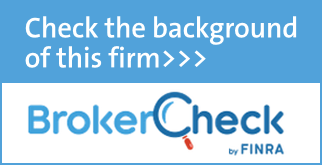Purchasing a home is a complex process full of numbers, calculations, and signatures. While most homeowners have heard of equity, many do not fully understand what it is, how to increase it, or what types of equity loans exist for homeowners.
To help you understand the basics of home equity, the independent financial advisors at Focus Financial are here to help! Let’s explore this topic in further detail and discover what home equity may mean for you.
What is Home Equity?
Home equity is the market rate of a homeowner’s unencumbered interest in their property. In other words, equity is the total difference between the home’s fair market value and the unpaid balance of all liens on the home.
Assets – Liabilities = Equity
For example, if someone owns a car worth $20,000 (an asset) but owes $8,000 on a loan against the car (a liability), the car represents $12,000 of equity. Does that mean equity can be negative? Yes – if liabilities exceed assets, the equity is negative.
According to The Balance “…home equity is the portion of your property that you truly ‘own.’ You’re certainly considered to own your home, but if you borrowed money to buy it, your lender also has an interest in it until you pay off the loan.”
The most valuable asset a homeowner can possess is home equity. As home equity can be used at any time in the future, it’s important for homeowners to understand what it is, how it increases, and what it can be used for.
So how do homeowners obtain home equity?
Homeowners can attain equity in three ways:
- Purchasing equity with a down payment
- Making any principal portion payments against their mortgage
- As property value increases
How to Increase Home Equity
Home equity increases with:
- Loan Repayment: As a loan is paid off, equity increases. Most loans are standard amortizing loans with the same monthly payment allocated to both principal and interest. Equity is built at an increasing rate each year as the amount going toward repaying the principal increases over time (Note: If a home loan happens to be an interest-only loan (or the equivalent), equity is not built the same way. Homeowners may need to pay an extra amount in addition to their regular mortgage payment to reduce their debt and increase equity).
- Price appreciation: Home improvement projects and/or a healthy real estate market can also cause equity to grow.
What Homeowners Can Do with Home Equity
According to The Balance, “Equity is an asset, so it’s a part of your total net worth. You can take partial or lump-sum withdrawals out of your equity at some point if you need to, or you can pass all the wealth on to your heirs. There are several ways to put that asset to work:”
- Receive cash after you sell the home and pay any related costs
- Borrow against it with a home equity loan (also known as a second mortgage) or a home equity line of credit (HELOC)
- Use it for a down payment on your next home purchase
- Fund retirement
Home Equity Loans for Homeowners
There are two types of home equity loans:
Home equity loan as a lump sum loan:
These loans usually have a fixed interest rate, but homeowners will usually have to pay closing costs and fees on these types of loans. Homeowners get all the funds from the loan upfront and will repay it with the same monthly installment over the life of the loan (generally 5 to 15 years). While homeowners will typically pay interest on the full amount of the loan, these loan types may still be a wise option when homeowners are considering large, one-time cash disbursements, such as paying for a full rehab of their home; consolidating higher-interest debts (such as credit cards and personal loans); or funding family vacations.
Home equity line of credit (HELOC): These credit lines allow homeowners to withdraw funds as needed and require interest payments on only the borrowed amount. As long as their line of credit is open, homeowners can use the amount they need when they need it during what is called the “draw period.” As a result, HELOCs are oftentimes beneficial for long-term expenditures such as small home renovations or college tuition payments.
During the draw period, homeowners make payments on their debt. When the draw period ends, homeowners enter the repayment period at which time they’ll make more aggressive payments to pay off the total debt, possibly including a significant balloon payment. HELOCs typically have a variable interest rate as well, so homeowners might end up paying back a higher amount than they planned on over the 15 to 20-year life duration of the loan.
To learn more about how to manage your home equity or which loan options you may be eligible for, contact Focus Financial, and we’ll help you find an independent financial advisor near you!


